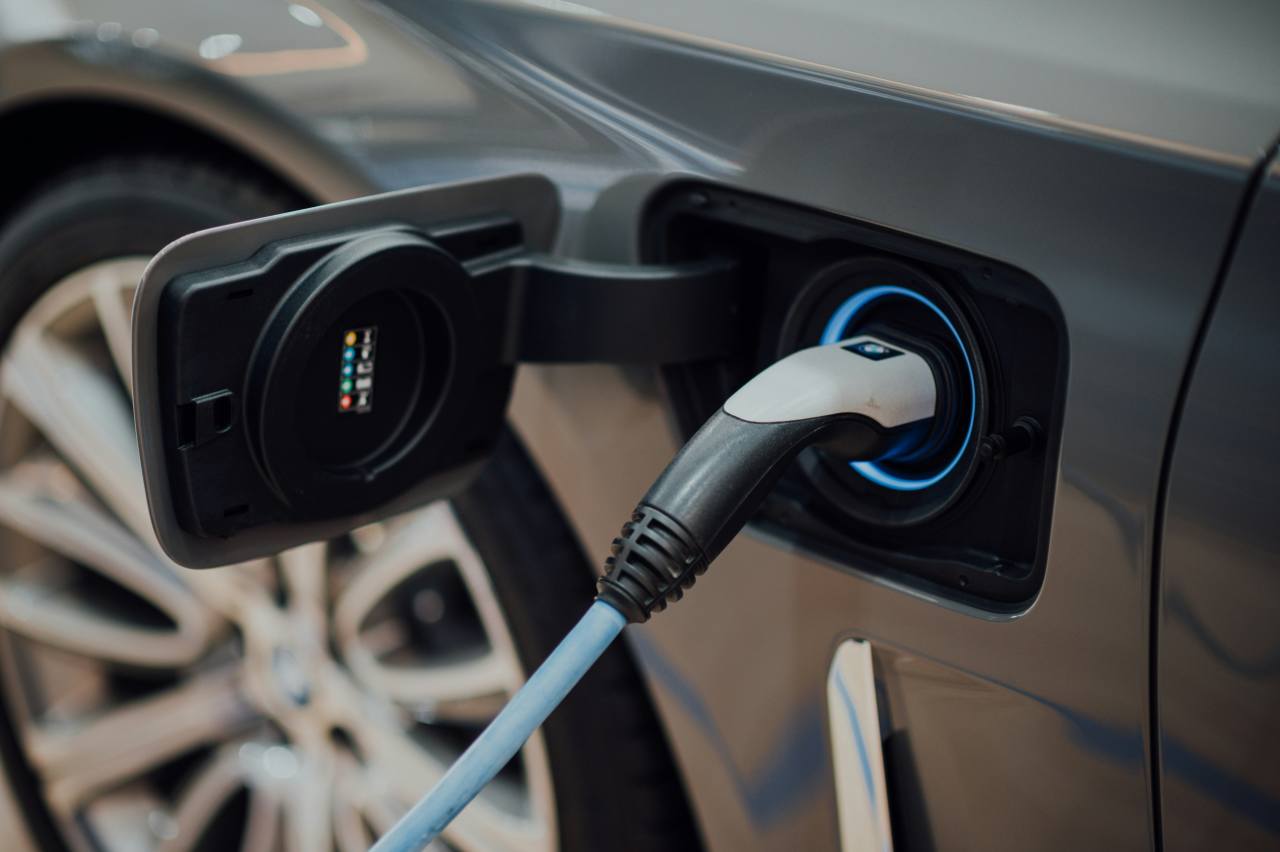Fun, Toyota, and hybrid are not words you often see together. Even two out of those three aren't obvious sentence-fellows. The Japanese giant spends a lot of money to convince us its cars are fun (and an equal amount telling us that daggy dads buy them) but as new cars roll on to dealer forecourts, there is more than a flicker of hope.
You see, the old RAV4 was perhaps one of my least favourite cars. Ponderous and boring but hard to ignore because of its obvious quality and longevity. I just couldn't click with it because it felt like it was targeted at the daggy dads in the ads as though they didn't deserve any better. That might be over-thinking it, but that's a glimpse inside my automotive head.
It might not be an overthink, though, because the petrol RAV4 Edge I drove last year was a vast improvement, not just on the RAV4, but on most Toyotas I had driven in the previous decade.
Something's up. Can the base model RAV4 Hybrid make all three of those words believable in the same sentence?
Toyota RAV4 2020: GX 2WD Hybrid
| Engine Type | Inline 4, 2.5L |
|---|---|
| Fuel Type | Unleaded Petrol/Electric |
| Fuel Efficiency | 4.7L/100km (combined) |
| Seating | 5 |
| Price From | $29,920 - $36,080 |
| Safety Rating |
|
Does it represent good value for the price? What features does it come with?
The GX Hybrid is obviously a bit more than (and a commensurate improvement on) the 2.0-litre GX, costing $35,490 ($39,606 drive-away) before any of the very skinny options list is added. So skinny it's basically a full-size spare and only available in this grade.
Base models just aren't what they used to be, especially not at Toyota, and particularly not when the price starts with a 35. You get 17-inch alloys, a six-speaker stereo, dual-zone climate control, reversing camera, central locking, front and rear parking sensors, active cruise control, sat nav, auto LED headlights, auto wipers and a space-saver spare.
_1.jpeg)
It's also a Toyota with (clears throat) Apple CarPlay and Android Auto on its prominent 8.0-inch touchscreen. Massive win.
Joining the belated digital revolution is DAB+ radio with a dire interface that reminds you how bad the embedded software is, despite a hefty upgrade in the last year or so.
I should note the car I drove was a pre-November 1, 2019 build and was yet to have CarPlay activated, but the identical system on the C-HR and Corolla has it.
_0.jpg)
EV Specs for Toyota RAV4 2020
| Drivetrain | Hybrid |
|---|---|
| Battery capacity | 1.6Kwh |
| Battery type | Nickel-metal hydride |
| Electric motor output | 88kW/202Nm |
| Combustion engine output | 131kW/221Nm |
| Combined output | 160kW |
| Petrol efficiency | 4.7L/100km |
Is there anything interesting about its design?
I do like the new RAV4 more than the old one. A few angles are a little too... um, angly, and from the rear seems to have pinched its look from the VW Tiguan. Sometimes in traffic I double take because the badges and tail-lights don't match. I doubt it's completely deliberate, but the resemblance is there.
Further similarity to the competition is evident in the nose, with a distinct whiff of Forester. Either way, the RAV4 is more interesting and much sharper than its flabby predecessor.
_0.jpg)
I really dig the interior, though. Not so much for its beauty - its left-field competitor, the Peugeot 3008 wins that race hands down - but for, again, how much better it is than the old car, and how clever it is.
Everything looks and feels much better, with nicer materials and some lovely touches like the industrial motif in the rubber bits that line things like the the cupholder, boot floor and the tray cut into the dash. The rubberised climate control dials are a nice touch, adding a halo of ruggedness and practicality. I prefer the cloth interior, too.
_0.jpg)
How practical is the space inside?
The RAV is very nicely packaged, which isn't something you can say about the Corolla or C-HR. Front seat passengers score a big phone sized cubby hole in the console as well as couple of litres underneath the armrest along with a little tray.
The two cupholders are placed just ahead of the armrest. The dash also sports a Kluger-style split, thoughtfully lined with rubber for your passenger's bits and pieces. Just the one USB port, though, which is a shame - the GXL and up have another four. Seems a bit stingy for rear-seat passengers.
_1.jpeg)
Rear seat dwellers score two cupholders and all four doors have bottle holders. There is also plenty of space back there with good head and leg room and air-con vents.
The boot has a clever two-position floor to eke out a few more litres if you need them. In its lowest position you have 580 litres (assuming you don't have an optional full-size spare).
Set it higher, and level with the boot loading lip, you have 542 litres. As is Toyota's habit, the company doesn't have an official figure for a folded seat situation.
_0.jpeg)
What are the key stats for the engine and transmission?
The cheapest RAV4 Hybrid comes with a 2.5-litre four-cylinder engine allied to an electric motor and a CVT auto driving the front wheels. Toyota is famously conservative with its mixed-power numbers, quoting a combined 160kW (up from 152kW in the non-hybrid and 127kW in the GX 2.0-litre) and down from the AWD's 163kW.
_0.jpg)
The company will only quote the combustion engine's torque figure, which is a fairly ho-hum 221Nm. It's clearly more than that with the electric motor boosting away, but alas, we don't have a proper number.
If you feel so inclined, the GX Hybrid will only tow a 480kg trailer (braked or unbraked), which rises to 1500kg braked for the AWD model.
How much fuel does it consume?
Given it's a hybrid, this is a rather important part of the package. The official Toyota figure comes in at 4.8L/100km on the combined cycle.
Here's the astonishing bit. I got it. A week of driving around as I would normally and I scored an indicated 4.8L/100km. I did a bit of digging to see if there is a corresponding WLTP figure (as opposed to the ADR) and found it was bang on 4.8L/100km.
It's lucky, really, because the tank is a smidge on the small side (for long runs, anyway) at 55 litres.
Warranty & Safety Rating
What safety equipment is fitted? What safety rating?
The RAV4 ships with seven airbags, ABS, stability and traction controls, trailer sway control, blind-spot monitor and reverse cross-traffic alert.
'Safety Sense' is standard across the range and includes lane departure warning, lane keep assist, forward AEB (with pedestrian and daytime cyclist detection), road sign recognition, auto high beam and active cruise control.
There are two ISOFIX points and three top-tether anchors.
ANCAP awarded the RAV4 a maximum five star rating in May 2019.
What does it cost to own? What warranty is offered?
There isn't much more Toyota can do here - a five year/unlimited kilometre warranty, seven years warranty on the engine and gearbox (if you keep it serviced by the book) and seven years of roadside assist.
On top of that, every 12 months or 15,000km you'll pay $210 per service, which is a bargain. This program covers the first four services, taking you to four years/60,000km.
_0.jpg)
For most people that's going to be fine and Toyota says it can knock the service over in 90 minutes, if you're happy to wait.
What's it like to drive?
Toyota's experience with hybrid is unquestioned. The company has been doing it for donkeys, but mostly in the terminally dull Prius.
Now it's working its way through to other cars, including the refreshed C-HR, last year's all-new Corolla and here in the RAV4. This isn't the plug-in hybrid overseas markets get, which is a shame, but given what we already know about the fuel economy, not a massive let down.
During the week I had the car, I tried to see how fast I could go under electric power only. The battery is a small one and anything more than breathing on the throttle starts the combustion engine. A leisurely trundle down a long straight street near me saw 36km/h come up on the screen before hydrocarbons stepped in.
_1.jpeg)
The hybrid system does a great job of getting you off the line, which in traffic is the bit that burns a lot of fuel. You can stay on electric in stop-start messiness when you're gentle on the throttle but it's not like, say, an Ioniq PHEV where you can get a good shove from the electric motor.
While it does whir and click a bit, the system is otherwise unobtrusive, although the initial bite on the brakes is a bit soft, which is understandable. You have to get used to it and it's not something from which other hybrids I've driven suffer. The transition from energy recovery to actual braking is a little awkward but once you're familiar, you'll stop noticing.
In terms of dynamics, the RAV4 is really nice to drive. There's enough feel in the steering to know what's going on, it rides well and responds to your inputs without the traditional Toyota pause or protests from either engine or tyres.
_0.jpeg)
It doesn't roll too much, which is a massive improvement. And I'm sure a better set of tyres (over the OE Bridgestone Alenzas, which sound like an Aldi brand) would improve its overall grip.
I drove an AWD RAV4 straight after this one and I can't say there was a marked difference. So, unless you need all four wheels in action, you won't need to spend the extra.
Verdict
My feelings of hope for improvements from Toyota have given way to expectation. Traditionally its cars have been safe, well-built, and high quality, just boring to drive and imbued with a bit much of a "just enough" attitude. The RAV4 GX Hybrid might be nearly forty grand on the road but it has an excellent safety package, genuine fuel-saving hybrid technology and plenty of room for you and your stuff.
Fun to drive SUVs don't always have the blue halo of electrification. Somehow Toyota has injected (a sensible amount of) fun into the RAV4 which is kind of funny given how much money the brand has spent pretending it's fun. But it's happened and that's a good thing.
Pricing Guides


.jpg)

.jpg)

.jpg)









































.jpg)
.jpg)

.jpg)

